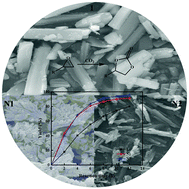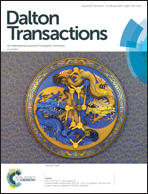Conversion of CO2 into cyclic carbonates by a Co(ii) metal–organic framework and the improvement of catalytic activity via nanocrystallization†
Abstract
The Co(II) metal–organic framework (MOF) {[Co(μ3-L)(H2O)]·0.5H2O}n (1, H2L = thiazolidine 2,4-dicarboxylic acid) with rich Lewis acid sites was used as a catalyst for the conversion of CO2 and propylene oxide into propylene carbonate with a yield of up to 98% under 50 °C and 1 atm. 1 exhibited excellent reusability, which could be regenerated easily for at least five runs without a decrease in the yield. Importantly, we synthesized two types of nano-crystals (N1 and N2) of 1 with polyvinylpyrrolidone (PVP) and hexadecyltrimethylammonium bromide (CTAB) as surfactants, respectively, and investigated their catalytic properties in comparison with that of 1 in the powder phase. A significant enhancement in both catalytic efficiency and product yield was observed when 1 was nano-crystallized. This is the first investigation about the relationship between the morphology and the catalytic parameters of MOFs. The results showed a strategy for efficiently applying MOFs as catalysts towards CO2 conversion, which could also be used in other MOF-catalyzed processes.



 Please wait while we load your content...
Please wait while we load your content...